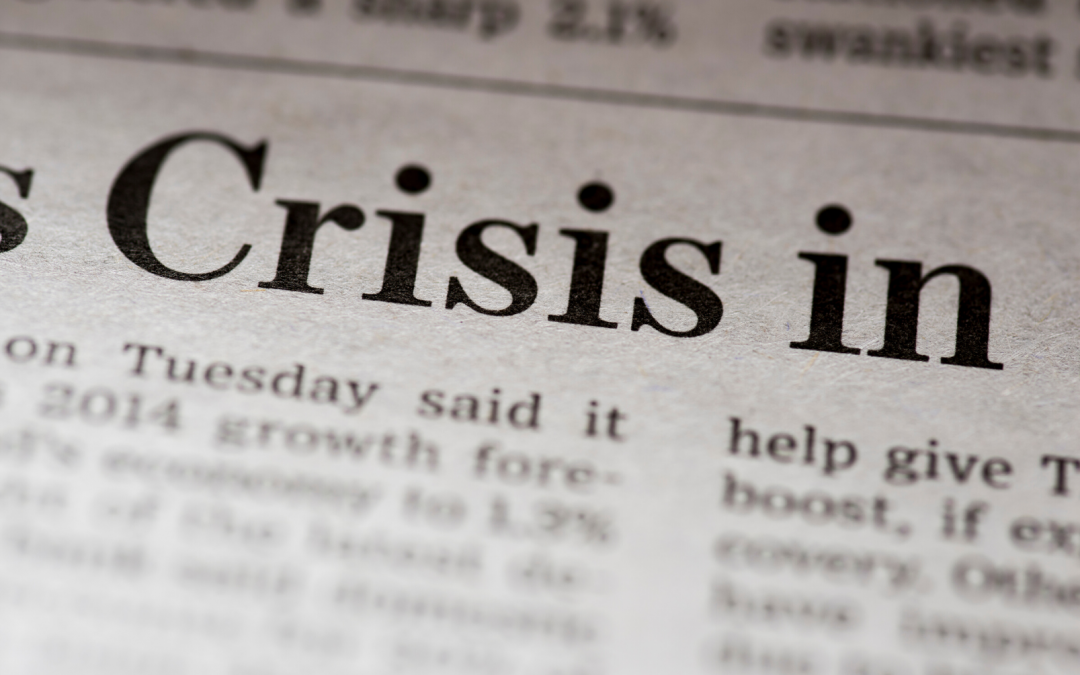Life would be much easier if crisis situations arrived with fair warning. If that were the case, there would be no need to prepare for them in advance.
Unfortunately, that’s not the case, as we are all seeing now with the Coronavirus (COVID-19) pandemic. Uncertainty is the only thing certain about COVID-19. This presents a huge challenge for communicators as the virus spreads and economies are impacted around the world.
In a perfect world, your organization would be prepared with an updated crisis communications plan to provide a path for cohesive messaging and outreach to your stakeholders. For many companies, a plan isn’t in place and they are now in internal crisis mode as they determine what the next steps are to ensure they are communicating effectively and empathetically in light of this unprecedented situation.
Here are three best practices that you can put into place today to immediately start communicating more effectively during this crisis.
1. Identify Your Crisis Communications Team
 A crisis like the COVID-19 pandemic can have an impact on every part of the business. You need to develop a dedicated team that’s going to be empowered to immediately take action and mitigate the crisis as best possible. Each department of your company should be represented in the crisis communications team to ensure internal cohesion.
A crisis like the COVID-19 pandemic can have an impact on every part of the business. You need to develop a dedicated team that’s going to be empowered to immediately take action and mitigate the crisis as best possible. Each department of your company should be represented in the crisis communications team to ensure internal cohesion.
Three key roles that should be assigned:
- Strategists – responsible for taking leadership of the crisis communications plan by ensuring the team stays on target and is communicating in sync across all channels. They should also be the one(s) to serve as spokespeople – during a crisis, you need someone who gives your company and its message a human form.
- Analysts – during the crisis, the analysts should be frequently monitoring communications channels for crisis-related keywords, company mentions, and comments that need to be responded to.
- Content Specialists – these are the creative thinkers and writers on the team. They should be responsible for owning the messaging and types of content being shared across all channels.
Every member of the team, from senior-level leadership down, should know who is doing what. Even if your team consists of solely two or three people, each person should understand the roles they are in charge of during a time of crisis. Each team member should be trained, so they are ready to respond at a moment’s notice.
2. Create Communications Guidelines
 Once a crisis has happened, you aren’t able to control how customers will react or what they’ll say on social. What you can control is your own messaging.
Once a crisis has happened, you aren’t able to control how customers will react or what they’ll say on social. What you can control is your own messaging.
With a crisis communications team in place, you can ensure consistency in messaging across every channel by developing communications guidelines. The first step in doing this is to lay down your core values as a company – what shapes your culture, mission, and vision. These core values need to be reflected in all the messaging that you distribute and publish during this time.
Next, you need to understand the unique role your brand plays in your customers’ and stakeholders’ lives and determine how that may have changed due to the crisis. What is appropriate for your brand to communicate at this time?
While developing basic messaging, you need to take into consideration that there will be nuances in your communications based on where, how, and to whom you are communicating with. Your messaging should be:
- Audience-specific – outline a list of all stakeholders you want to maintain consistent communications with during this time of crisis. This list will most likely include employees, customers, partners, media outlets, the general public (social media), and in some cases the government. Know your audiences and the rules for engaging and communicating with each one so your company is best represented.
- Channel-specific – every channel you communicate on has its unique characteristics – Facebook and Instagram are more casual, LinkedIn is professional. Before distributing content, consider these differences and adjust your communications accordingly.
- Process-specific – develop a process for how you will reach each of these audiences and collaborate your outreach to ensure no audiences are left in the dark. Identify and provide responses to anticipated questions to help ensure your employees and the company are prepared to respond promptly
These guidelines will help you set a specific tone that will be echoed across every channel and with all of your employees and stakeholders throughout the crisis.
3. Be Thoughtful with Your Communications Content
 Now more than ever, it is important that you be thoughtful about all of your internal and external communications. Be authentic and intentional when reaching out to your customers and stakeholders.
Now more than ever, it is important that you be thoughtful about all of your internal and external communications. Be authentic and intentional when reaching out to your customers and stakeholders.
Some things to take into consideration with your communications at this time:
- Determine what information is appropriate and necessary to communicate at this time. Don’t use the pandemic as a marketing opportunity and don’t opportunistically link your brand to this health crisis.
- Don’t publish COVID-themed content if it isn’t necessary. Every person and business in the nation is being impacted by COVID-19. Everyone is working to keep their employees safe and striving to provide uninterrupted service, that isn’t news and doesn’t need to be communicated to the masses. If your service is being impacted, that is news and should be shared. Think first, publish second. Be thoughtful about the content you put out there related to the pandemic and don’t share it if it isn’t necessary.
- Ensure that information and facts you are sharing come from a trusted and knowledgeable source. You should always fact-check before you publish, this is more critical now than ever. Don’t contribute to the infodemic that is now happening alongside the COVID-19 pandemic. Share links for more information to organizations such as the Colorado Department for Public Health & Environment (CDPHE), Centers for Disease Control and Prevention (CDC), and World Health Organization (WHO).
- Be transparent about what is happening within your company. Now is not the time to ignore the situation and how it is impacting your company or go radio silent. Don’t have the entire answer to a question? Be transparent and share the information you do have and provide more details when you have them.
- Be thoughtful about the tone of voice. This is not the time to be sarcastic or glib. Make sure your tone is empathetic and understanding. Listen to what your customers and stakeholders are saying and adjust your copy and tone appropriately.
- Infuse your messaging with positivity when times are bleak. The news cycle is bringing people down, lift them with lighthearted messages. Make sure the messages are on-brand, but now is a great time to build community with positive stories that focus on the good.
- Pause all scheduled messaging to ensure inappropriate or tone-deaf posts aren’t published inadvertently. What may be okay to post today, may be tone-deaf tomorrow. Determine what you are sending out in real-time to take that into account.
- Keep up-to-date with what’s happening. Because situations change rapidly with this ever-changing crisis, you need to stay up-to-date with what’s happening and adjust your communications accordingly. Don’t want to watch cable news all day to keep up with the latest headlines? Stay up-to-the-minute on Twitter. Create lists following local, regional, and national news sources – make sure they are credible sources.
- Be vigilant about correcting mistakes. Mistakes will happen, especially with a rapidly evolving crisis. Be quick to recognize any errors you have made and quickly provide a correction. This is not a time to worry about repercussions.
The Public Relations Society of America (PRSA) and PRSA Health Academy put the best practices even more simply with a great infographic you should keep on hand to reference during this time.
If you need help with any aspect of our communications planning or outreach, connect with us and we can help.


